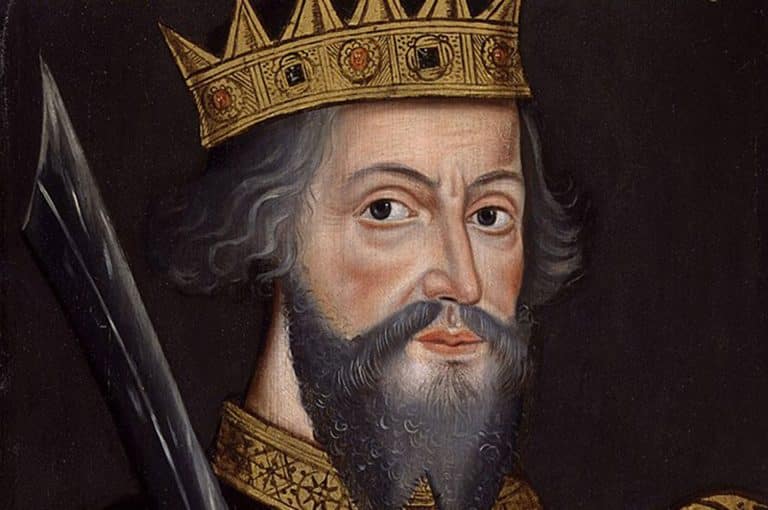10 of the Most Celebrated Knights of the Medieval Ages
Knights of the Medieval Ages have long captured the imagination of historians, enthusiasts, and even storytellers around the world. These armored warriors, bound by chivalry and often hailed from noble lineage, played pivotal roles in shaping the course of history during tumultuous times. Their tales of valor, loyalty, and sometimes, treachery, have become the stuff of legends, echoing the complex realities of medieval politics, warfare, and society. This article seeks to delve into the lives of ten such Knights of the Medieval Age, each celebrated for their unique contributions and the indelible marks they left on the annals of history.
Featured Image Credit: Léo Schnug, CC BY-SA 2.0 https://creativecommons.org/licenses/by-sa/2.0, via Wikimedia Commons
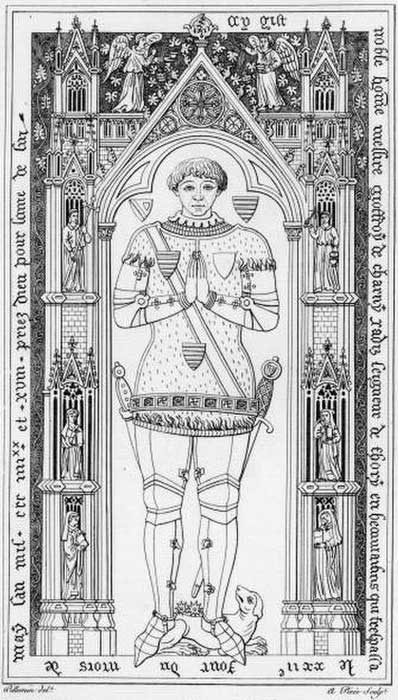
Geoffrey de Charny: The Quintessence of Chivalric Valor
Sir Geoffrey de Charny, a prominent French knight of the 14th century, emerged as a symbol of chivalry, courage, and honor. Born around 1300 into a noble family, he inherited the title of Lord of Charny and was raised in the chivalric tradition of medieval France. He embarked on the path of knighthood through rigorous training in martial skills, horsemanship, and the code of chivalry, embodying the ideals of honor and loyalty that defined a knight’s life.
Charny’s exploits on the battlefield became legendary, showcasing his martial prowess and unwavering commitment to his lord and country. He participated in various campaigns and battles, with his most notable contributions occurring during the Hundred Years’ War between England and France. Charny fought alongside King Philip VI of France at the Battle of Crécy in 1346, displaying remarkable valor and leadership even in the face of defeat. His courage in the midst of adversity earned him admiration among his contemporaries.
One of Charny’s most renowned accomplishments was his authorship of “A Knight’s Own Book of Chivalry,” a treatise that served as a guide to aspiring knights, emphasizing the importance of honor, courtesy, and martial skill. This work provided insights into the mindset and values of a knight of the Medieval age, revealing Charny’s deep understanding of the chivalric code and his commitment to upholding it.
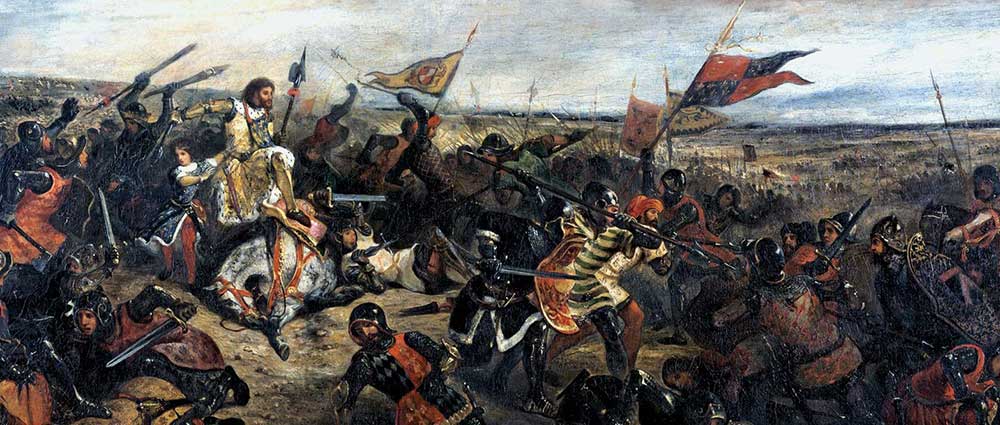
Charny’s life took a tragic turn during the Battle of Poitiers in 1356. While fighting for King John II of France, he was captured by the English and held for ransom. Despite his captivity, Charny remained a respected figure, and his captors allowed him to continue raising funds for his own release. Sadly, he would not live to see his freedom. In 1356, during a brief armistice, Charny traveled to Calais to collect his ransom, but he was killed in a skirmish. His death marked the end of a life dedicated to the ideals of chivalry and honor.
Sir Geoffrey de Charny’s legacy endured beyond his lifetime. He was remembered as a paragon of chivalry and a model knight, inspiring generations of knights and nobles. His contributions to the code of chivalry and his dedication to noble ideals earned him a lasting place in history. While there may not be direct pop culture references to Charny, his influence can be seen in the continued fascination with medieval history and the enduring allure of knights and their tales.

Jean de Joinville: The Chronicler of Crusader Kings
Sir Jean de Joinville, a prominent French knight and chronicler of the 13th century, left an indelible mark on history through his vivid accounts of the medieval world. Born around 1224 into a noble family, he was raised in Champagne, France, and began his journey to knighthood through rigorous training in horsemanship, weaponry, and the chivalric code. Joinville’s early life was immersed in the ideals of honor, loyalty, and martial skill that defined the life of a medieval knight.
Joinville’s most renowned contribution to history is his work “The Life of Saint Louis,” a biography of his close friend and liege, King Louis IX of France. This chronicle provides a unique window into the world of medieval Europe, offering insights into the character of Louis IX, the customs of the time, and the political landscape of the era. Joinville’s firsthand accounts of Louis IX’s life and his own experiences during the Seventh Crusade provide a rich and valuable historical record.
Joinville’s exploits on the battlefield were no less remarkable than his literary contributions. He participated in the Seventh Crusade led by Louis IX, embarking on a journey to the Holy Land. His loyalty to the king and his bravery in battle were evident during this campaign, as he fought alongside Louis IX in various engagements against the Saracens. Joinville’s accounts of the hardships and triumphs of the crusade offer a unique perspective on the challenges faced by knights of the Medieval Ages in their quest for glory and religious fervor.
One particularly fascinating tale from Joinville’s chronicles involves an elephant gifted to Louis IX by the Sultan of Egypt. The elephant, named Abul-Abbas, was a curiosity to the French court and left a lasting impression on Joinville, who vividly described the beast’s appearance and behavior in his writings.

Joinville’s later life was marked by continued service to the French crown and his commitment to his lord’s memory. He served in various capacities under Louis IX’s successor, King Philip III of France. Upon his return from the Crusade, Joinville dedicated himself to a life of piety, becoming a member of the religious order of the Trinitarians.
In terms of cultural significance, Joinville’s writings are invaluable historical documents that provide valuable insights into the medieval world. His detailed observations, personal anecdotes, and reflections on chivalry and faith continue to captivate historians and enthusiasts alike. While Joinville’s influence on pop culture may not be as direct as that of some other historical figures, his chronicles remain essential reading for those seeking to understand the complex tapestry of medieval life and thought.

John Chandos: The Valiant Vanguard of King Edward’s Reign
Sir John Chandos, a distinguished English knight of the 14th century, carved a legendary legacy through his unwavering loyalty, military acumen, and chivalric virtues. Born around 1320 into an esteemed noble family, Chandos embarked on his path to knighthood through the rigorous training and education that were hallmarks of his privileged upbringing. His early life immersed him in the chivalric ideals of honor, bravery, and devotion to one’s lord.
Chandos’s exploits on the battlefield were marked by valor and strategic brilliance, garnering him recognition as one of the Hundred Years’ War’s foremost commanders. His close association with Edward, the Black Prince, was pivotal to his military career. At the Battle of Poitiers in 1356, Chandos led a contingent of English troops and displayed exceptional leadership even in the midst of the chaotic clash. His tactical expertise and daring maneuvers earned him a place of honor among his fellow knights.
One of the most famous anecdotes involving Chandos revolves around his encounter with Bertrand du Guesclin, another renowned French knight. The two knights engaged in a joust during a truce, with du Guesclin successfully unseating Chandos. In a display of chivalry and camaraderie, du Guesclin lent Chandos his own horse to continue the joust, showcasing the mutual respect that often existed among knights of the Medieval Ages.

Chandos’s most notable contributions were made during the Hundred Years’ War between England and France. He played a significant role in various battles, including the Battle of Nájera in 1367, where he led the English forces to victory against the Castilian coalition. His military prowess and leadership on the field solidified his reputation as a formidable commander.
Tragically, Chandos met his end in 1369 during a skirmish near Lussac. While defending the fortress of Mortemer against a French raid, he was fatally wounded by a spear. His death marked the loss of a knight whose chivalry and martial skill had earned him respect on both sides of the conflict.
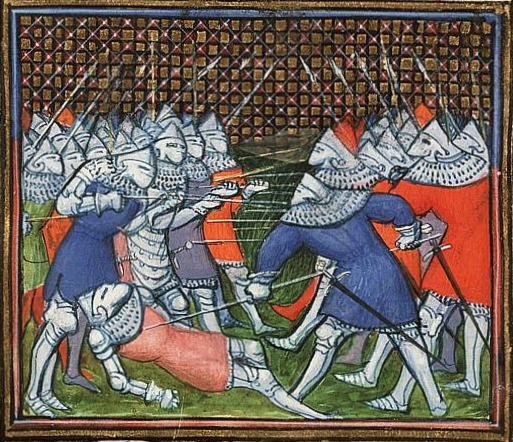
Sir John Chandos’s legacy endured beyond his lifetime, influencing the cultural perceptions of chivalry and knighthood. He became a symbol of the ideals of loyalty, bravery, and honor that characterized the medieval knight. While his influence on pop culture may not be as pronounced as some other historical figures, Chandos’s life and exploits continue to captivate historians and enthusiasts interested in the captivating stories about knights of the Medieval Ages.

Gottfried von Bouillon: The Crusader King of Jerusalem
Gottfried von Bouillon, a legendary figure of the medieval period, was a French knight who rose to prominence as a key figure in the First Crusade and the establishment of the Kingdom of Jerusalem. Born around 1060 into the noble House of Bouillon, Gottfried’s early life was steeped in the traditions of nobility and chivalry. He became a knight through the customary process of training and service, honing his martial skills and embracing the ideals of honor and bravery that defined knighthood.
Gottfried’s most renowned exploits occurred during the First Crusade, a historic military campaign aimed at capturing the Holy Land from Muslim control. Leading a diverse coalition of Christian knights, nobles, and warriors, Gottfried’s military prowess and tactical brilliance were evident throughout the campaign. His leadership and strategic planning culminated in the successful siege of Jerusalem in 1099, leading to the establishment of the Kingdom of Jerusalem, of which he became the first ruler.
One intriguing aspect of Gottfried’s story is his reputed humility and refusal to claim the title of “king” after the capture of Jerusalem. Instead, he adopted the title of “Advocate of the Holy Sepulchre,” demonstrating his devotion to the Christian faith and his belief in serving the sacred cause rather than seeking personal power.

Gottfried’s death came relatively soon after his triumph in Jerusalem. In 1100, just one year after the capture of the city, he died in the Holy Land. While the exact cause of his death is debated, his legacy as a pivotal figure in the establishment of the Kingdom of Jerusalem remained secure.
Gottfried von Bouillon’s cultural significance is immense, as he embodies the spirit of medieval chivalry, religious devotion, and the ideal of selfless service to a higher cause. His role in the First Crusade and the capture of Jerusalem solidified his place in history as a noble warrior whose actions shaped the course of events in the Holy Land. While there may not be direct pop culture references to Gottfried, his legacy continues to inspire depictions of crusaders and knights in historical fiction, literature, and media related to the medieval era.
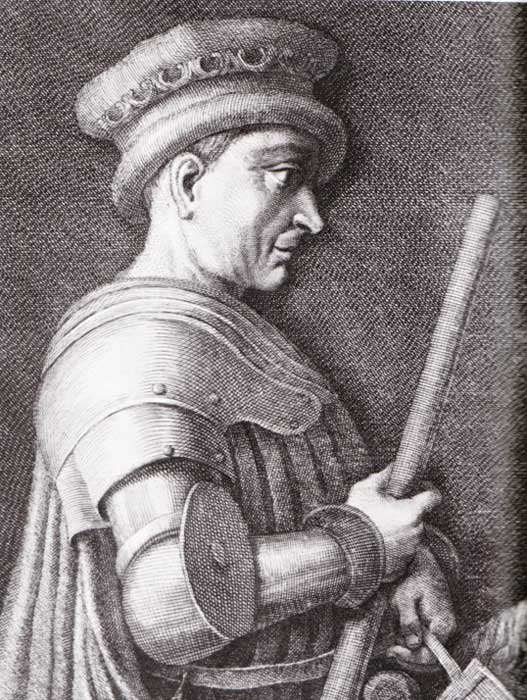
John Hawkwood: The Mercenary Maestro of Medieval Italy
John Hawkwood, an English mercenary knight, left an indelible mark on medieval history through his exceptional military prowess and his role in various conflicts on the European continent. Born around 1320 in England, Hawkwood’s early life is shrouded in mystery, but he eventually embarked on a journey that would lead him to become one of the most renowned mercenaries of his time and knights of the Medieval Ages.
Hawkwood’s exploits as a mercenary captain were marked by his strategic brilliance and adaptability. He spent a significant portion of his career in Italy, where he became a prominent figure in the chaotic landscape of city-states and warring factions. Hawkwood led a group of mercenary soldiers known as the “White Company,” famed for their distinctive white armor and their effectiveness on the battlefield.
One of Hawkwood’s most notable exploits occurred during the Hundred Years’ War, where he initially fought for the English against the French. However, his career as a mercenary took him across Europe, and he eventually switched sides to serve various Italian city-states. His ability to command respect and loyalty from his soldiers was evident in his successful military campaigns and his reputation as a skilled leader.
Hawkwood is perhaps most known for his role in the Italian Wars, particularly during his service to Florence. He became a condottiero, a professional military leader, and commanded Florentine forces in several battles. His military acumen and tactical prowess made him a sought-after leader in a region known for its complex political landscape and frequent conflicts.

Sailko, CC BY 3.0 https://creativecommons.org/licenses/by/3.0, via Wikimedia Commons
Hawkwood died in 1394 at the age of approximately 74. His legacy endured through his reputation as a skilled military commander and his contributions to the development of mercenary warfare in medieval Europe.
John Hawkwood’s cultural significance lies in his embodiment of the mercenary spirit, navigating the intricacies of medieval politics and warfare for personal gain. His military expertise and adaptability allowed him to thrive in diverse environments and under various employers. While Hawkwood may not have direct pop culture references, his role as a mercenary captain continues to inspire narratives in historical fiction, literature, and media that explore the complexities of medieval warfare and the lives of those who lived by the sword.
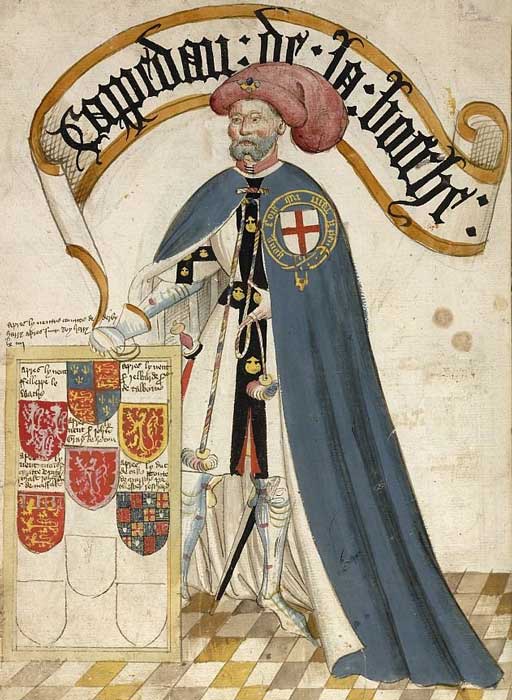
Jean II de Grailly: The Valiant Captal de Buch of the Hundred Years’ War
Sir Jean II de Grailly, known as the Captal de Buch, was a notable French knight whose chivalric ideals and military prowess made him a respected figure during the Hundred Years’ War. Born around 1311 in France, de Grailly’s early life likely involved training in martial skills and noble virtues, as he hailed from a prestigious family with a strong tradition of knighthood. The title “Captal de Buch” not only highlighted his noble lineage and ownership of the Buch region but also underscored his role as a captain and commander of significant military forces.
De Grailly’s reputation as a valiant warrior and his unwavering loyalty to the English crown earned him a place of honor among his contemporaries. One of the most notable episodes in his life was his participation in the Battle of Poitiers in 1356, where he fought alongside Edward, the Black Prince, against the French forces. De Grailly’s exceptional leadership and combat skills were evident during the battle, solidifying his status as a prominent military commander.
A particularly fascinating aspect of de Grailly’s life was his capture by the English during the Battle of Poitiers. Instead of being held as a prisoner, he was eventually ransomed and went on to serve as a close confidant and advisor to the Black Prince. This unique turn of events demonstrated the complexities of chivalry, loyalty, and the bonds forged on the battlefield.
De Grailly is perhaps most renowned for his participation in the War of the Two Peters, a conflict that arose from the disputed succession to the Crown of Aragon. De Grailly supported Peter the Cruel’s claim to the throne against the rival claimant, Henry of Trastámara. His military leadership and tactical expertise played a significant role in various battles of the war.

Sir Jean II de Grailly’s death occurred in 1377. He passed away in captivity, having been captured by the forces of Henry of Trastámara during the War of the Two Peters. Despite his demise, his legacy endured as a testament to his unwavering commitment to chivalry, loyalty, and military excellence.
De Grailly’s cultural significance lies in his representation of the complexities of loyalty and honor in the midst of conflict. His story offers insights into the lives of medieval knights who navigated the intricate web of alliances and rivalries during a tumultuous period in history. While there may not be direct pop culture references to de Grailly, his role in the Hundred Years’ War and the War of the Two Peters continues to be a source of inspiration for historical fiction, literature, and media that explore the intricate tapestry of medieval warfare and the chivalrous values displayed by knights of the Medieval Ages.
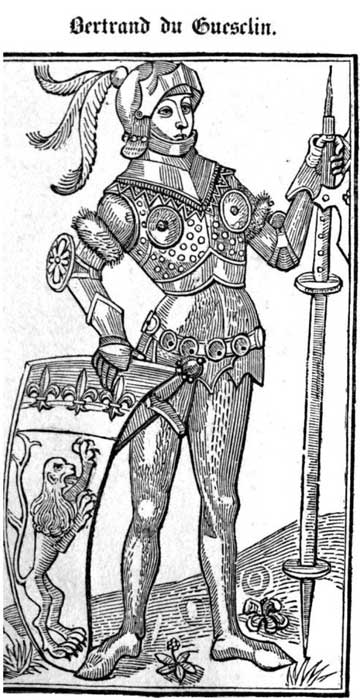
Bertrand du Guesclin: The Unyielding Black Dog of Brittany
Bertrand du Guesclin, a celebrated medieval knight, emerged as a legendary figure during the Hundred Years’ War between England and France. Born around 1320 in Brittany, France, du Guesclin’s early life was shaped by his noble upbringing and the chivalric ideals that surrounded him. His path to knighthood began with the customary training in martial skills, horsemanship, and the code of chivalry.
One of the most intriguing aspects of du Guesclin’s early life is his reputation as a “broken” or “disinherited” knight. Initially lacking substantial wealth, he initially struggled to establish himself as a knight due to the financial demands of equipping oneself for warfare. However, his remarkable skill and valor soon caught the attention of nobles, and he became a sought-after figure in various conflicts.
Du Guesclin’s most notable exploits occurred during the Hundred Years’ War, where he became a symbol of resistance against English dominance. He was known for his tactical brilliance and his ability to rally troops even in dire circumstances. His involvement in battles such as Cocherel and the Breton War of Succession earned him renown as a skilled military leader.

Du Guesclin’s rise to prominence began with his participation in the Breton War of Succession, a bitter conflict for control of the Duchy of Brittany. Du Guesclin’s eventual capture marked a significant event in the Breton War of Succession. His imprisonment had a notable impact on the conflict’s dynamics, as his absence affected the morale of the forces aligned with Charles of Blois. Without du Guesclin’s leadership, the French and Blois forces eventually suffered defeat in the battle, resulting in the capture of Charles of Blois as well.
While imprisoned, du Guesclin’s reputation and renown did not wane. His valor and chivalry on the battlefield had made him a respected figure, even among his captors. In an act of chivalric courtesy, Sir John Chandos, the English commander who had captured him, treated du Guesclin with respect and allowed him a degree of freedom within his captivity.
One of the most famous tales associated with du Guesclin is his capture of the famed English knight Sir Henry of Trastámara. During a battle, du Guesclin recognized Henry and offered him a place among his own retinue, a gesture that highlighted his respect for chivalry even in the midst of conflict.
Du Guesclin’s most renowned period of service was during his tenure as Constable of France. In this role, he played a pivotal role in repelling English advances and bolstering French resistance. His strategic prowess was evident in battles like the Battle of Auray, where he led the French forces to victory.
Bertrand du Guesclin’s death came in 1380, during a time when his leadership was still crucial for France. Despite his demise, his legacy as a valiant defender of French sovereignty endured, and he remains a symbol of resistance against foreign powers.
Du Guesclin’s cultural significance is substantial, as he represents the ideals of chivalry, honor, and patriotism that resonated during the tumultuous period of the Hundred Years’ War. While not as prevalent in modern pop culture as some other figures, his role in history has inspired depictions in literature, historical fiction, and media that explore the complexities of medieval warfare and the individuals who stood against the odds in defense of their homeland.
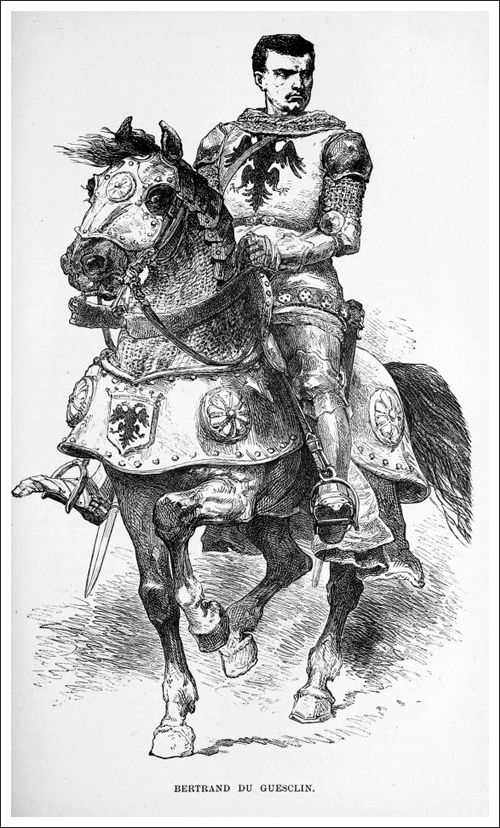
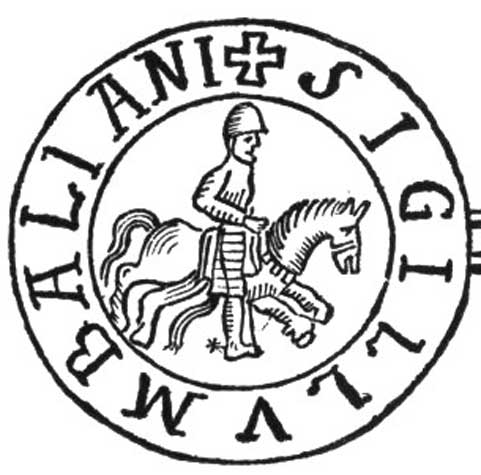
Balian de Ibelin: Defender of Jerusalem
Balian de Ibelin, born around 1143, was one of the most notable knights of the Crusader era. Born into the influential Ibelin family in the Kingdom of Jerusalem, Balian’s early life was infused with the chivalric ideals and military prowess that the Ibelins were known for. His lineage played a pivotal role in his growth as a warrior which was common for many knights of the Medieval Ages. The Ibelins held sway in the Crusader states, and being born into such a family meant Balian had a legacy to live up to.
Throughout his life, Balian’s exploits became legendary. He was often painted as a model of chivalry, embodying the very virtues that the medieval world held dear: courage, loyalty, and honor. While historical records from the era are sometimes scant or biased, Balian’s reputation as a skilled diplomat and formidable warrior is well-established.
Balian of Ibelin’s marriage to Maria Comnena, a Byzantine princess and the widow of King Amalric I of Jerusalem, was both a significant personal and political alliance during the turbulent times of the Crusader states. Maria, descending from the powerful Byzantine Comnenus dynasty, brought with her a strong lineage and claim to the throne of the Kingdom of Jerusalem. Their marriage, which took place around 1177, elevated Balian’s status within the kingdom’s nobility, aligning him even more closely with the ruling elite and consolidating his influence in the political and military affairs of the region.
Balian cemented his place among the most celebrated knights of the Medieval Ages for his role during the Siege of Jerusalem in 1187. By that time, the situation for the Crusaders in the Holy Land had become perilous. Saladin, the Muslim sultan, had achieved significant victories and had set his sights on Jerusalem. Many of the city’s noble defenders had been killed or captured in previous battles, notably at the catastrophic Battle of Hattin. Balian, having safely been in Tyre during the battle, had to rush back to Jerusalem to organize its defense.
The union of Balian and Maria was not just a strategic alliance; accounts suggest that the two shared a close and supportive relationship. This bond was evident during the Siege of Jerusalem in 1187. Balian had initially secured safe conduct from Saladin to move his wife and children to Tripoli after the defeat at Hattin. However, upon reaching Jerusalem and seeing the dire state of its defenses and the despair of its inhabitants, Maria urged Balian to stay and lead the defense of the city. In an age of political marriages, the collaboration and mutual respect between Balian and Maria Comnena stood out, showcasing a partnership that transcended mere political convenience.
Upon arriving in Jerusalem, Balian discovered a city filled with despair. With a limited number of knights and a population unprepared for war, the situation seemed dire. However, showing exceptional leadership, he took charge of the city’s defenses, rallied the inhabitants, and even knighted new warriors from among the bourgeoisie to bolster their numbers. When Saladin’s forces finally reached the city’s walls, Balian’s defense strategy was so effective that it compelled Saladin to negotiate. Although the city eventually fell to Saladin, the Muslim leader allowed the Christian population to leave unharmed, a decision influenced by his respect for Balian and the valiant defense he had led.

The last years of Balian’s life, post the fall of Jerusalem, were spent in diplomacy and minor skirmishes. He continued to play a role in the politics of the remaining Crusader states until his death around 1193. While his exact resting place remains a mystery, his legacy as a knight par excellence and as the defender of Jerusalem lives on.
In terms of cultural significance, Balian of Ibelin’s story, like those of many other figures from the era, may have been romanticized over time. Modern pop culture has recognized and celebrated his tale. Perhaps the most notable representation is in the 2005 film “Kingdom of Heaven” directed by Ridley Scott, where Balian is portrayed by actor Orlando Bloom. While the film takes significant liberties with historical events for dramatic effect, it has brought Balian’s story to a global audience in the 21st century, highlighting his unwavering spirit and the tumultuous era of the Crusades.
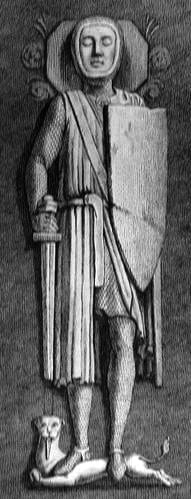
Author
Richard Gough
William Marshal: The Epitome of Medieval Knighthood
William Marshal, often referred to as the “Greatest Knight” of the medieval era, was born in 1146 to a minor noble family. His early life set the stage for an illustrious career filled with chivalry, bravery, and unwavering loyalty. As a young boy, William was used as a hostage during a siege initiated by King Stephen against his father, John Marshal. When threatened that young William would be killed with a trebuchet, John famously retorted that he had “the hammer and anvil” to forge more sons. Despite this grim circumstance, William’s life was spared, a decision that would profoundly impact the course of English history.
By the age of 12, William started his training as a knight, beginning as a page and then serving as a squire to a cousin in Normandy. His valor, skill, and reputation grew rapidly in the subsequent years. One of the most vivid tales from his early exploits was when he unhorsed Richard the Lionheart in a skirmish, only to earn the prince’s admiration rather than his wrath. As a testament to his prowess, William’s victories in tournaments became legendary, making him a celebrated figure throughout the land.
However, tournaments were but a small part of William’s illustrious career. He’s best known for his service to four English monarchs: Henry II, Richard the Lionheart, John, and Henry III. Amid the political turbulence, shifting alliances, and frequent battles of this era, William’s loyalty and skill on the battlefield remained constant.
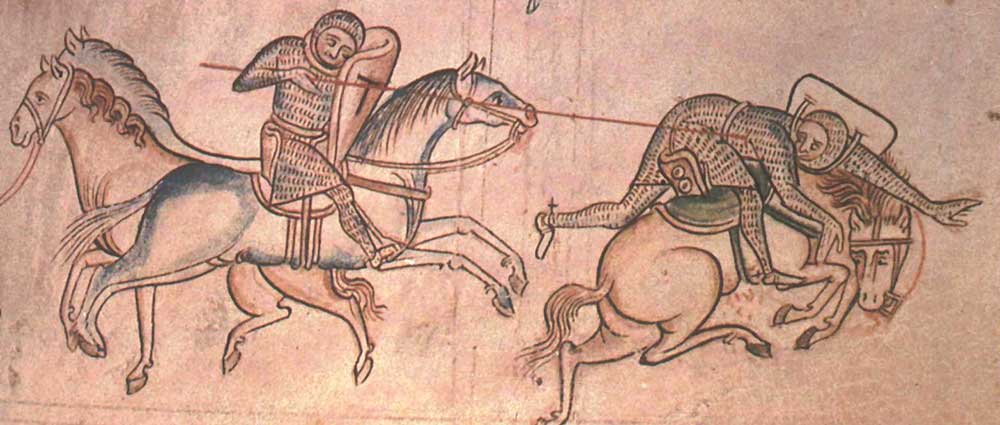
One of his most renowned episodes was his defense of Eleanor of Aquitaine, the formidable queen mother, against the rebellion of her sons, the future King Richard. When Richard laid siege to the castle where Eleanor resided, William, despite the odds, held the defenses and ensured the queen’s safety. Such instances earned him a reputation not just as a formidable warrior but also as a knight of great honor and integrity.
In the intricate web of medieval politics, William Marshal’s unwavering loyalty and martial prowess came to the forefront again during a skirmish involving the de Lusignan family and Eleanor of Aquitaine. In 1174, Eleanor, the Queen Mother and former wife of King Henry II of England, found herself in the crosshairs of a political dispute. As she traveled through her duchy, the de Lusignans, an influential and ambitious family, sought to capture her, aiming to gain an upper hand in their regional disputes and leverage against the English crown.
William Marshal, serving Eleanor at the time, showcased his exemplary chivalry and tactical genius during this episode. As they neared the castle of Mirebeau, where Eleanor sought refuge, Marshal, with a handful of knights, orchestrated a feint- successfully misdirecting the pursuing de Lusignan forces. Exploiting the landscape and his intimate knowledge of warfare, William managed to delay and divert the would-be captors, enabling Eleanor to reach the safety of the castle.
This intervention not only saved the Queen Mother from capture but also cemented Marshal’s reputation as one of the most dependable knights of his era. The incident is emblematic of the broader political intrigues of the time, where personal loyalties often intersected with grand political designs, and where individuals like William Marshal played pivotal roles in shaping the course of history.

William Marshal’s rise to the title of Earl of Pembroke serves as a testament to his loyalty, prowess in battle, and distinguished service to the English Crown. Having served loyally under four kings—Henry II, Richard I, John, and Henry III—he garnered respect and trust for his unwavering allegiance and strategic acumen. His reward came in 1189, when Richard I, recognizing Marshal’s unyielding support, bestowed upon him the title of Earl of Pembroke. This not only granted him considerable lands and wealth, but also solidified his position among the highest ranks of English nobility. The elevation to such a prestigious title was a culmination of years of dedication and demonstrated how instrumental William Marshal was to the Angevin dynasty.
In his later years, William was not just a warrior but also a statesman. He was instrumental in the drafting and proclamation of Magna Carta in 1215 under King John. Later, during the reign of the young Henry III, William was appointed as the Protector of the Realm and Regent of England, signifying the immense trust placed upon him by the monarchy.
In the twilight years of his storied life, William Marshal, ever the embodiment of the chivalric ideal, took the cross and embarked on the Seventh Crusade. In 1219, answering the call of the Church and the fervent religious spirit of the time, Marshal, although in his early seventies, journeyed to the Holy Land. His participation was more symbolic than active, given his age, but it demonstrated his unwavering commitment to the knightly virtues and religious duties that defined the era and fulfilled a promise to the late King John. His brief sojourn in the Holy Land added another chapter to the legend of one of medieval England’s most iconic figures.
When William Marshal passed away he left behind a legacy that few could match. His life was an embodiment of the chivalric code, a blend of courage, loyalty, and honor. He was buried in the Temple Church in London, a resting place befitting his immense contributions to the English realm.
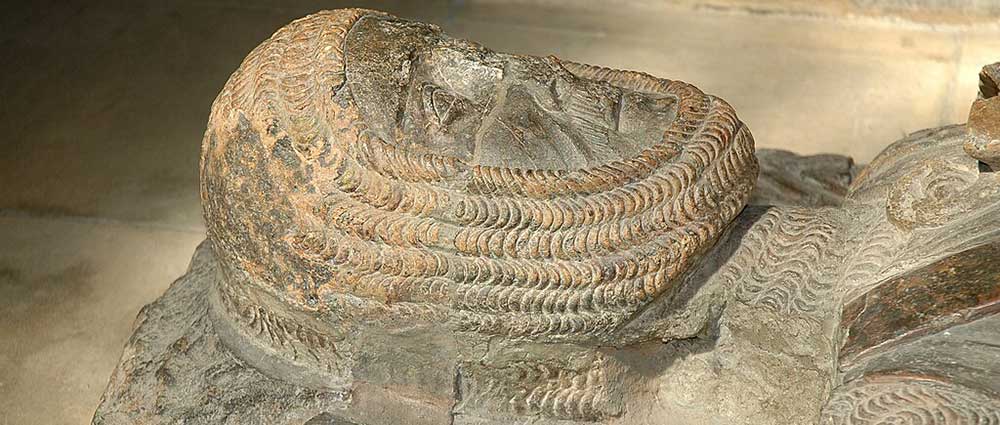
In terms of cultural significance, William Marshal’s life has been the subject of many historical studies, underscoring his importance in medieval English history. His story is also portrayed in “The Pillars of the Earth,” a historical novel by Ken Follett, and “Knight’s Fee” by Rosemary Sutcliff. Moreover, his biography, “The History of William Marshal,” written shortly after his death, remains one of the most valuable primary sources about knighthood and the medieval period. While not as frequently depicted in popular culture as some of his contemporaries, those who delve into the history of England’s knights of the Medieval Ages will invariably encounter the unparalleled story of William Marshal.
We have written a couple of articles about some additional knights that did not make this list. If you enjoyed reading about these knights we recommend checking out the following Articles: • The Tale of Pierre Terrail, Chevalier de Bayard: the Last True Knight • Zawisza The Black: The Legendary Feats Of A Heroic Polish Warrior




